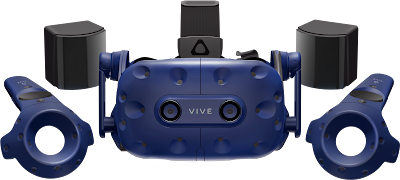Virtual reality is a fascinating way to travel using nothing but the power of technology. With headsets and motion tracking, virtual reality lets you look around a virtual space as if you were actually there, or play games as if you were there. Virtual reality has gained traction in recent years with immersive games and experiences, though it's still in a state of flux, with headsets coming and going pretty quickly. We keep an eye on the best available on the market here.
Meta (formerly Oculus) focuses on standalone VR headsets, Quest 2 and Quest Pro, but offers the option to connect them to a PC. HTC has the Steam-compatible Vive Cosmos and Vive Pro 2, while HP has the more affordable Reverb G2. Sony has PlayStation VR compatible with PS4 with the more expensive and strangely incompatible PS VR 2 coming next year. And Valve has its own expensive Index headset.
Best Overall VR Headsets
1. Meta Quest 2
Meta Quest 2 (formerly Oculus Quest 2) is an $400 standalone VR headset. We don't recommend it as high as when it was $300; Meta recently increased the price by $100. It's still inexpensive for a VR rig, though, and you don't need any further hardware or cables sticking outside of the headset. It's powered by mobile components, especially the Qualcomm Snapdragon 865 chipset, as well as that's enough to run immersive VR experiences. It also has an incredibly powerful library of these experiments, so you'll find something interesting.
Checkout the Meta Quest 2 - Amazon
2. Meta Quest Pro
We love Meta Quest 2 for delivering a powerful VR experience without any cables. It makes it relatively cheap, but its hardware is also a bit old. Meta Quest Pro addresses this last point at the literal cost of the first. Its screen is better, the controller is better, the processor is better, and it has face and eye tracking. It's also three times more expensive than Quest 2, which is why the "Pro" part is in the name.
Checkout the Meta Quest Pro - Amazon
3. Sony PlayStation VR
PlayStation VR is aging. It was released in 2016 for the PlayStation 4 and uses motion controllers dating back to 2010, but that doesn't mean it's not worth as long as if you're a PlayStation 4 or PlayStation 5 owner. , it doesn't need any additional hardware if you already own one of these consoles (though if you want to use it with your PS5, you'll need to request a free adapter(Opens) in a new window) from Sony for the PlayStation Essential Camera to work).
Checkout the Sony PlayStation VR - Amazon
4. HTC Vive Pro 2
This advanced semi-consumer VR headset is aimed at both enthusiasts and expert with the sharpest images available at 2448 x 2448 pixels per view. It easily offers the best pictures we've seen in VR so far, but at a premium price: The headset alone is $799 and doesn't include the base stations and controllers (but on the bright side, you can use the Valve Index controller with it).
It works with SteamVR, just like Oculus Quest 2, and has its own VR software store in the form of Viveport. The store offers a Viveport Infinity(opens in a new window) subscription benefit that provides endless access to virtual reality experiences, rather of buying a la carte software.
Checkout the HTC Vive Pro 2 - Amazon
5. HP Reverb G2
Microsoft's Windows Mixed Reality platform has been shrinking for a while, as HTC and Valve offer much larger libraries of VR games and software. As a result, the formerly WMR-specific HP Reverb has been reworked into the SteamVR-compatible HP Reverb G2. It's more expensive than the Oculus Quest 2, but more cheap and easier to set up than the Valve Index for a connection-only VR experience. It's also great resolution for the amount, at 2,160 x 2,160 per eye.
This medium platform is attractive if you want to try PC-connected VR gaming without expense a lot of money. It also uses camera-based tracking, so you don't need to set up base stations like you would with the Index or Vive Pro 2.
Checkout the HP Reverb G2 - Amazon Hope you find it useful for choosing between the wide range of VRs.











0 Comments